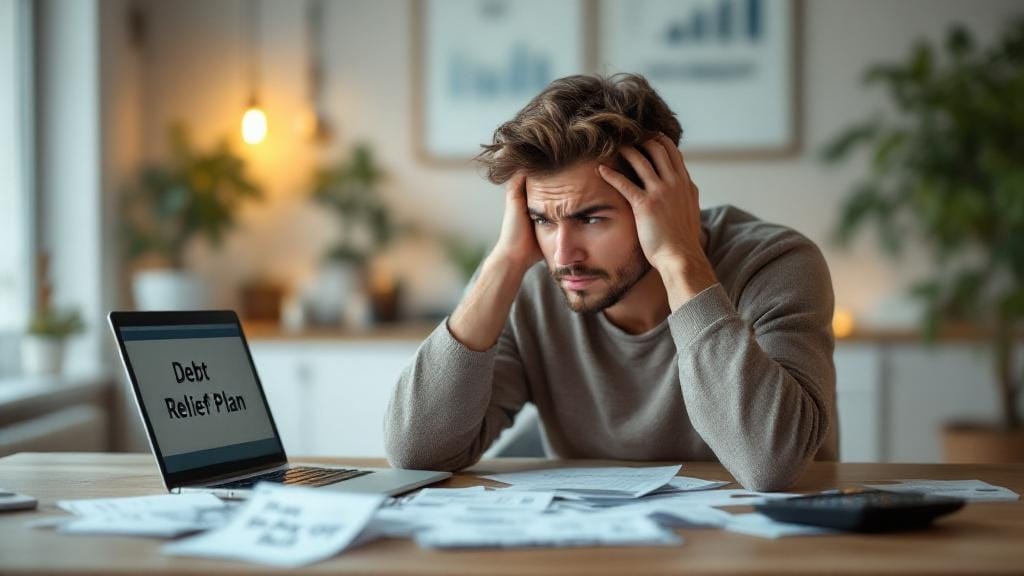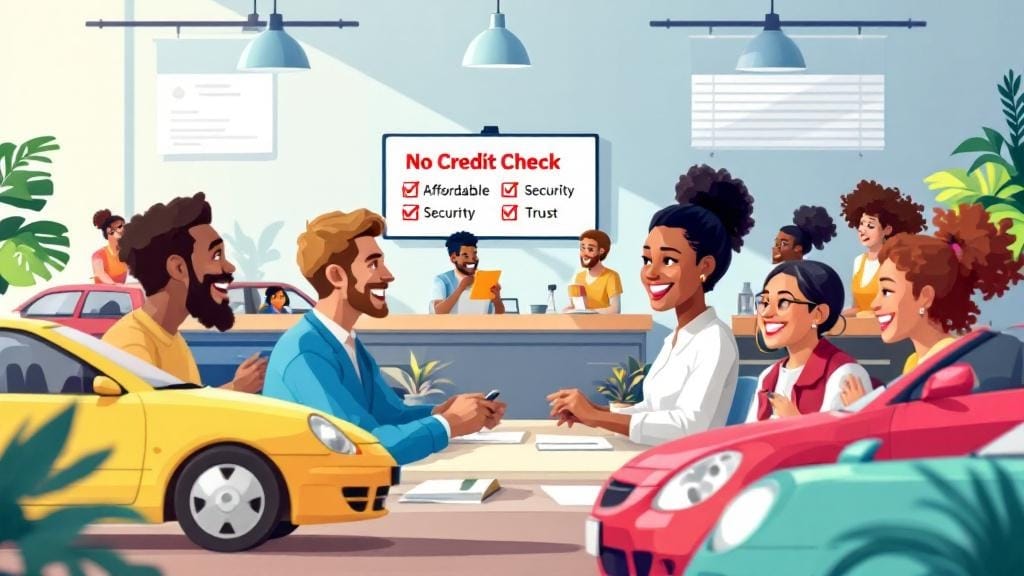What Is Unsecured Debt?
Unsecured debt is any debt that isn’t backed by collateral. Unlike a car loan or mortgage (which are secured by your car or house), unsecured debts rely only on your promise to repay.
Common types of unsecured debt include:
Credit card debt
Personal loans
Medical bills
Student loans (in some cases)
If you’re struggling to keep up, you’re not alone—and unsecured debt help is available.
Why Unsecured Debt Becomes a Problem
Unsecured debt often carries higher interest rates, especially credit cards and personal loans. Without a repayment plan, balances can spiral out of control.
Here’s why it happens:
Minimum payments only cover interest
High-interest debt keeps growing
Emergency expenses push you to borrow more
No collateral = lenders charge more for risk
Before long, a few thousand in unsecured credit card debt can balloon into a long-term financial burden.
🔍 Types of Unsecured Debt
It helps to know exactly what you’re dealing with before seeking help.
| Type | Typical Interest Rate | Risk Level | Can Be Settled? |
|---|---|---|---|
| Credit card debt | 18%–36% | High | Yes |
| Personal loan debt | 9%–24% | Medium | Yes |
| Medical bills | Often 0% to 10% | Medium | Yes |
| Payday loans | Up to 400% APR | Extreme | Sometimes |
1. ✅ Unsecured Debt Consolidation
This method rolls multiple high-interest debts into a single lower-interest loan.
How it helps:
Simplifies your payments
Reduces your total interest
Gives a defined payoff schedule
Example: If you’re paying 22% interest across 4 cards, consolidating them into a 9% personal loan saves thousands over time.
Tip: Look for lenders that offer unsecured personal loan debt help through fixed low-rate products, especially if your credit is fair to good.
2. ✅ Debt Management Plans (DMPs)
Offered by nonprofit credit counseling services, DMPs are structured plans that negotiate lower interest and fees.
Key benefits:
One monthly payment
Reduced or waived interest
No more collection calls
Real-life result: A client with $15,000 in unsecured debt reduced their interest rate from 25% to 8%, paying off the debt in 4 years with a DMP.
Important: You’re still paying the full debt—just on better terms.
3. ✅ Unsecured Debt Settlement
This involves negotiating with creditors to accept less than the full amount owed.
Pros:
Can reduce balances by 30%–60%
No collateral is at risk
Cons:
Harms your credit score short-term
Taxable forgiven debt (in some cases)
Debt settlement is a last resort, but it’s one of the best unsecured debt help programs if you’re already behind and collections have started.
4. ✅ Financial Counseling for Unsecured Debt
Financial counseling helps you create a custom debt repayment strategy with expert advice. Certified counselors can assist with:
Budget planning
Credit improvement
Referrals to consolidation or DMPs
Understanding debt relief programs
Many nonprofit agencies offer free or low-cost help with unsecured debt through counseling.
5. ✅ Bankruptcy Alternatives
Bankruptcy should always be a last option, but it’s not your only one. Before going that route, explore:
Hardship programs through creditors
Forbearance or deferment for medical or student debt
Consumer proposals (Canada) or Chapter 13 repayment plans (U.S.)
These can provide structured relief while protecting your credit rating as much as possible.
Government Help for Unsecured Debt: Is It Available?
There’s no direct government program to pay off unsecured debt, but support exists:
Free financial counseling (through NFCC or HUD agencies)
Low-income assistance programs (utility bills, medical care)
Student loan relief options (for federal loans)
For the most part, consumer credit issues are handled privately, but education and legal support are often free.
Choosing the Best Unsecured Debt Help Programs
When evaluating help programs, ask:
Is the company nonprofit or for-profit?
Do they charge upfront fees? (⚠️ Red flag)
Are they accredited by organizations like NFCC or FCAA?
Can they offer a clear payoff timeline?
Always check Better Business Bureau (BBB) ratings and online reviews.
How to Get Out of Unsecured Debt Without Damaging Your Credit
Here’s a step-by-step strategy:
🔁 Step-by-Step Guide:
List all unsecured debts with balances and interest rates
Call creditors and ask for hardship options
Create a repayment plan—use snowball (smallest debt first) or avalanche (highest interest first)
Explore consolidation if your credit is decent
Enroll in a DMP if needed
Track progress monthly and adjust
Avoid missed payments and don’t ignore debt collectors. The more proactive you are, the more options you’ll have.
⚖️ Unsecured vs. Secured Debt: A Quick Comparison
| Feature | Unsecured Debt | Secured Debt |
|---|---|---|
| Requires Collateral | ❌ No | ✅ Yes (home, car, etc.) |
| Interest Rate | Higher | Lower |
| Risk to Assets | None | Repossession possible |
| Examples | Credit cards, loans | Mortgage, auto loan |
Understanding this difference helps you prioritize repayments and avoid risky borrowing.
✅ Key Dos and Don’ts for Managing Unsecured Debt
✔️ Do:
Get help early
Make consistent payments
Track your progress
Understand your options
❌ Don’t:
Ignore bills or collectors
Take out payday loans to repay credit cards
Sign up for unverified “debt relief” services
Stop paying altogether (unless advised by a counselor)
📌 Real-Life Example: How Ria Escaped $20K in Credit Card Debt
Ria, a 32-year-old teacher, was juggling 5 credit cards totaling $20,000. She tried minimum payments but made no progress.
After consulting a nonprofit credit counselor, she entered a DMP:
Interest rates dropped from 26% to 7%
Her monthly payment became manageable
She was debt-free in 4.5 years
Today, Ria is building savings and has a credit score over 700.
📚 FAQs: Unsecured Debt Help
1. What is the best unsecured debt help program for credit card debt?
For most people, a Debt Management Plan (DMP) from a nonprofit agency is the best starting point. It reduces interest and simplifies payments.
2. Can I get help with unsecured debt if I have bad credit?
Yes. Many credit counseling services don’t require a credit check. Debt settlement and some consolidation loans may still be available.
3. How can I reduce unsecured debt fast?
Use the avalanche method (target high-interest debt first) or a consolidation loan to slash interest costs. Avoid taking on new debt.
4. Is there government help for unsecured debt?
Not directly. But government-supported credit counseling and income-based assistance can ease your situation.
5. Will unsecured debt settlement hurt my credit?
Yes, in the short term. But it can be better than ongoing delinquencies or bankruptcy in the long run.
6. What’s the difference between consolidation and settlement?
Consolidation pays the full amount in a more manageable way.
Settlement means negotiating to pay less than what you owe.
7. Can I get help for medical bills or personal loan debt?
Absolutely. Both fall under unsecured debt, and most programs offer support for these types as well.
Final Thoughts: You Have Options—And You’re Not Alone
Unsecured debt help is not a one-size-fits-all solution—but the good news is, there are solutions. Whether it’s credit card balances, personal loans, or unexpected medical debt, the key is to act before it becomes unmanageable.
Explore debt relief programs, talk to a certified counselor, and remember—you don’t need collateral to regain financial control.








Comments (0)